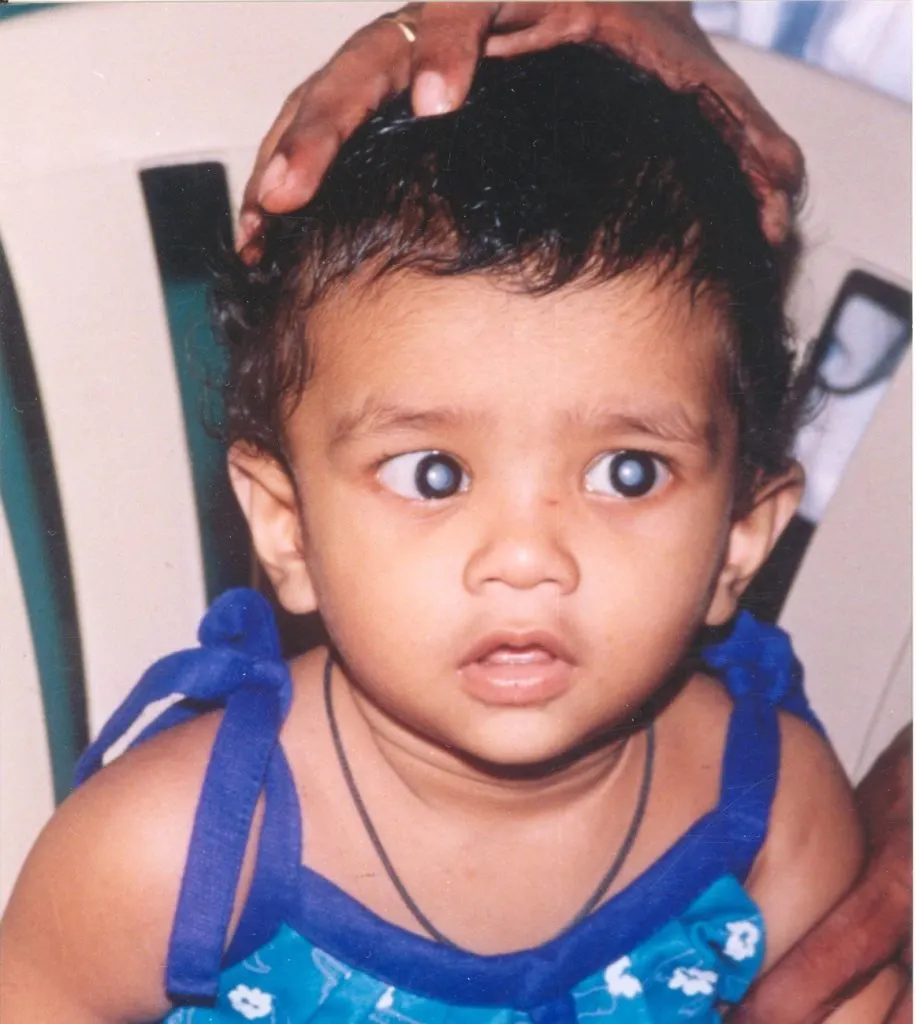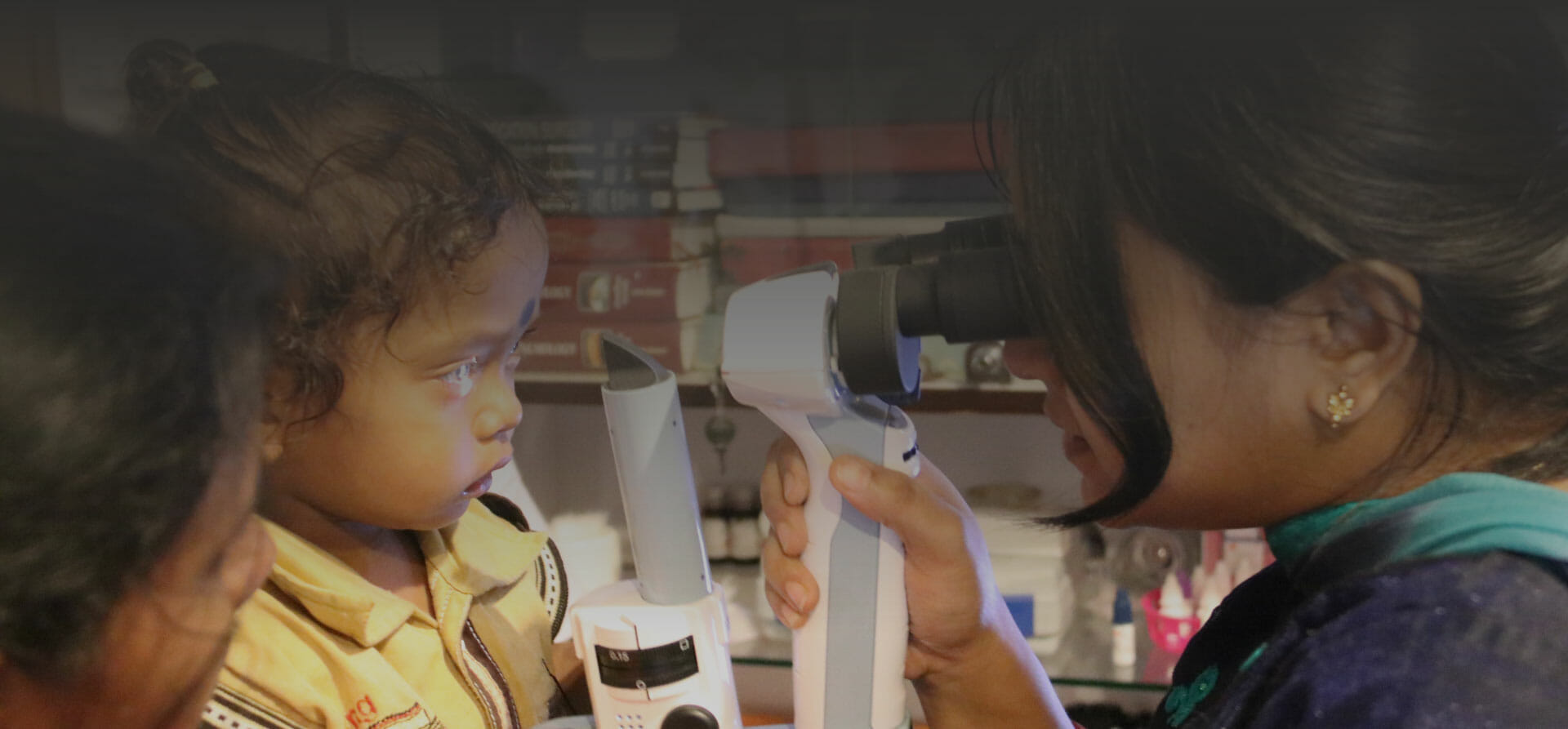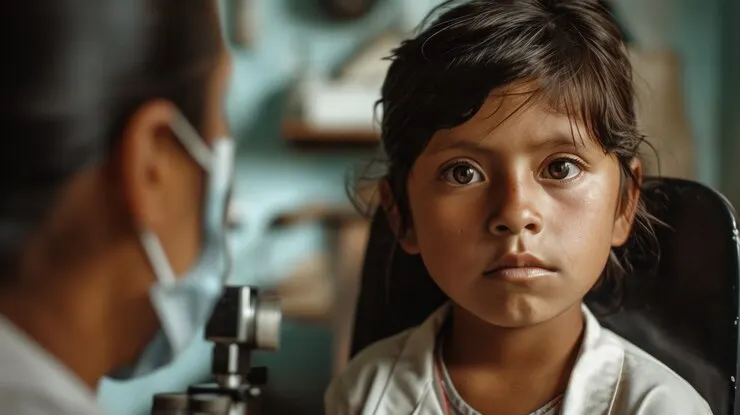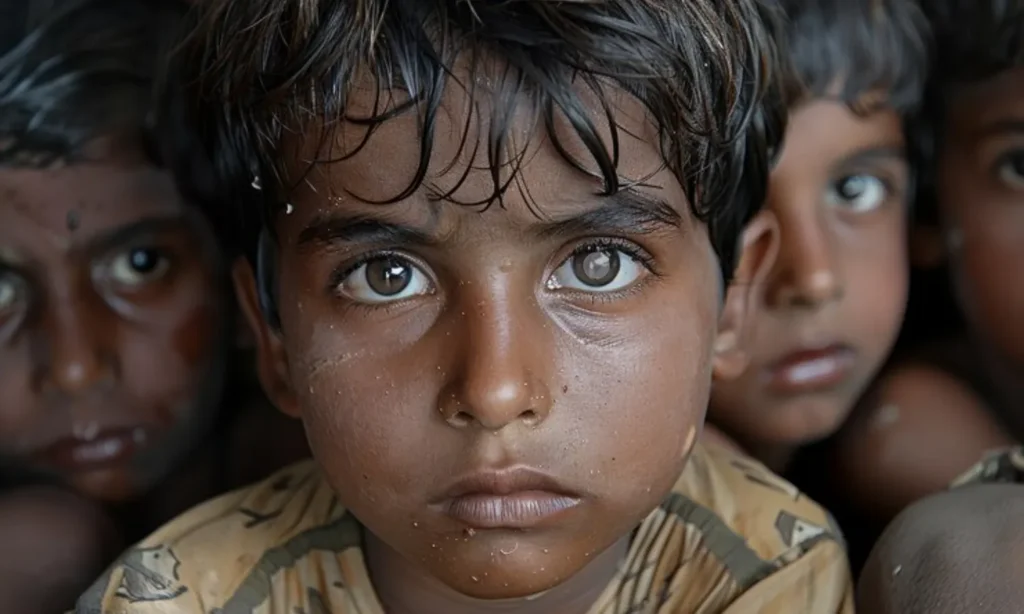Did you know that cataracts in children can contribute to 5% to 20% of childhood blindness worldwide? While less common than in adults, cataracts in our youngest can severely impact their vision and overall development. The stakes are high, and the need for awareness is even higher. In this blog, you’ll discover the critical importance of recognizing the early signs of cataracts, understanding the various types, and navigating the available treatment options. So, let’s explore how you can safeguard your child’s vision and ensure they have the brightest future possible.
Contents
- 1 What are Cataracts?
- 2 Are Childhood Cataracts Common?
- 3 Signs and Symptoms of Cataracts in Children
- 4 Your Help Can Make a Difference!
- 5 How a Child Get Cataracts?
- 6 Diagnosing Pedriatic Cataracts
- 7 Treatment Options for Child Cataracts
- 8 Procedure of Cataract Surgery in Children
- 9 Life After Cataract Surgery
- 10 Your Contribution Can Help The Needy
What are Cataracts?
Cataracts occur when changes in the lens of the eye cause it to become cloudy, leading to impaired vision. In children, this condition can be particularly concerning as it affects their ability to develop and interact with their surroundings effectively.
Types of Cataracts in Children
- Congenital Cataracts: Babies born with cataracts have congenital cataracts. These can be detected early, often during routine newborn examinations.
- Developmental (Acquired) Cataracts: These cataracts develop during childhood due to various causes such as disease or inflammation.
- Traumatic Cataracts: Cataracts that result from an injury to the eye are called traumatic cataracts. Children active in sports or outdoor activities might be at higher risk.
Are Childhood Cataracts Common?
While not as prevalent as in older adults, childhood cataracts are still a significant concern. Statistically, about 3 to 4 children out of every 10,000 live births are diagnosed with cataracts each year. This figure underscores the importance of understanding and addressing this condition early in life to prevent any long-term effects on a child’s vision and development.
Signs and Symptoms of Cataracts in Children

Identifying cataracts in children can be challenging as they may not be able to communicate their vision issues clearly. But here are some signs and symptoms parents and caregivers should watch for:
- Cloudy or Gray Area in the Pupil: One of the most noticeable signs of cataracts is a cloudy or gray appearance in the pupil, which is normally black.
- Difficulty with Vision: Children with cataracts might exhibit signs of poor vision, such as not responding to visual cues or having trouble recognizing faces or objects at a distance.
- Nystagmus: Some children develop nystagmus, an involuntary movement of the eyes, which can be a response to impaired vision.
- Sensitivity to Light: Cataracts can cause increased light sensitivity, leading to squinting or discomfort in bright environments.
- Excessive Rubbing of the Eyes: Young children with vision discomfort may frequently rub their eyes.
- Abnormal Eye Movements or Alignment: Keep an eye on any changes in how your child’s eyes move or if they seem misaligned, as this could indicate vision issues.
Early detection of these signs can lead to timely and effective treatment, significantly improving the chances of preserving or restoring good vision.

Your Help Can Make a Difference!
Cataract Is The Biggest Reason For Blindness!
With Every Donation, You’re Gifting a Cataract Surgery To Someone in Need!
How a Child Get Cataracts?
The development of cataracts in children can be attributed to a variety of factors, ranging from genetic predispositions to environmental influences. Here are some of the common causes:
- Many cases of pediatric cataracts are hereditary, passed down from parents who may carry genes that predispose to cataract formation.
- Some children are born with cataracts as a part of congenital syndromes, such as Down syndrome, or other genetic disorders.
- Disorders that affect metabolism, like galactosemia or diabetes, can lead to the development of cataracts in children.
- If a mother has certain infections during pregnancy, such as rubella, toxoplasmosis, or cytomegalovirus, it can increase the risk of the baby developing cataracts.
- Accidents or injuries to the eye can lead to traumatic cataracts in children.
- Long-term use of corticosteroid medications can increase the risk of cataract development.
- Exposure to certain types of radiation can also contribute to the formation of cataracts in young children.
Understanding these causes helps in assessing the risk and managing the condition effectively through appropriate medical guidance and treatment strategies.
Diagnosing Pedriatic Cataracts

Diagnosing cataracts in children requires careful examination and the use of specialized diagnostic tools. Here’s how healthcare professionals typically identify and assess cataracts in young patients:
- Pediatric Eye Examination
- Red Reflex Test: This is a simple, quick test often performed right after birth and during pediatric appointments. A red reflection from the eye is a normal response, whereas a white or gray reflection, known as a leukocoria, might indicate a cataract.
- Slit Lamp Examination: This instrument allows the doctor to see the structures at the front of the eye under magnification and can help detect cataracts or other abnormalities.
- Visual Response Tests: Various tests can be used to gauge how well a child can follow objects with their eyes and at what distance, providing indirect information about their visual clarity.
Treatment Options for Child Cataracts
When it comes to treating cataracts in children, the primary goal is to restore or maintain vision to support normal visual development. Here are the main treatment strategies used:
- Surgical Removal: The most common and effective treatment for significant cataracts in children is surgery. This involves the removal of the cloudy lens, which is then replaced with an artificial intraocular lens (IOL). In infants and very young children, an I.OL might not always be implanted immediately; in these cases, contact lenses or glasses may be used temporarily.
- Post-Surgical Care: After cataract surgery, children typically require close monitoring and follow-up care. This includes the use of eye drops to prevent infection and inflammation, regular eye exams to check for any complications, and the use of corrective eyewear to optimize vision.
- Non-Surgical Options: If the cataract is partial and not significantly impairing vision, non-surgical management might be considered. This can include observation over time to monitor the cataract’s progression and the use of glasses or contact lenses to improve vision.
- Visual Rehabilitation: Post-treatment, children often need help to learn or relearn how to use their eyes effectively. Visual rehabilitation programs can include the use of aids, various therapies, and exercises designed to improve visual skills and adapt to new ways of seeing.
- Ongoing Monitoring: Regardless of whether surgery is performed, children with cataracts require ongoing care to monitor their vision and eye health. This is crucial for detecting any changes early and adjusting treatment as needed.
The choice of treatment depends on various factors, including the severity of the cataract, the child’s age, and overall health. Collaboration between parents, pediatric ophthalmologists, and other healthcare professionals is essential to ensure the best possible outcomes for children with cataracts.
Procedure of Cataract Surgery in Children

Cataract surgery in children is a delicate procedure that requires careful planning and precision due to the smaller size and sensitivity of young patients’ eyes. Here’s an overview of how this critical surgery is typically performed:
- Preparation and Anesthesia: Comprehensive pre-operative assessments are conducted to tailor the surgery specifics, including intraocular lens (IOL) measurements if applicable. General anesthesia is typically used to ensure the child remains still and comfortable throughout the procedure.
- Surgical Steps:
- Incision: A small cut is made in the cornea.
- Capsulotomy: An opening is created in the lens capsule.
- Lens Removal: Special instruments are used to remove the cloudy lens. In very young children, the entire lens may be taken out.
- IOL Implantation: If appropriate, an IOL is placed within the lens capsule. If not, corrective lenses are used post-surgery.
- Closure and Recovery: The corneal incision often heals naturally without sutures. Post-surgery, children are monitored as they recover from anesthesia, and parents receive detailed care instructions.
- Follow-Up: Regular visits are crucial to monitor the healing process and adjust treatment as necessary.
This streamlined approach helps ensure that the child experiences minimal discomfort and achieves the best possible outcome for their vision.
Life After Cataract Surgery
Recovering from cataract surgery marks the beginning of a new phase for a child, one that involves careful monitoring and ongoing adjustments to ensure optimal visual development. Here’s what life typically looks like after pediatric cataract surgery:
- Immediate Post-Surgery Care
The first few days after surgery are crucial for recovery. Parents need to ensure that their child wears protective eyewear to safeguard the operated eye from accidental bumps and to prevent rubbing. Following the doctor’s instructions for administering eye drops or ointments is essential to prevent infection and reduce inflammation. - Visual Aids
Depending on whether an intraocular lens (IOL) was implanted, the child may require additional visual aids. If no IOL was implanted, corrective glasses or contact lenses might be necessary to aid vision. - Follow-Up Visits
Regular check-ups with the pediatric ophthalmologist are mandatory to monitor the healing process and the eye’s response to the surgery. These visits also help detect any potential complications early, such as secondary cataracts or misalignment of the eye. - Visual Rehabilitation
Many children need visual rehabilitation to maximize their visual potential after surgery. This can include exercises to improve eye coordination, depth perception, and other aspects of visual function. - Adjusting Activities
Depending on how the child’s vision develops, adjustments might be needed in their daily activities and learning environment. Educators and caregivers should be informed of the child’s visual limitations and potential needs for special accommodations.
Your Contribution Can Help The Needy
With the alarming growth in cataract rates among children—a condition that could lead to as much as 20% of childhood blindness—therefore, there is a pressing need for community support and intervention. Imagine the difference we could make if every child afflicted by this condition could receive the timely care they need. You have the power to change lives.

You Can Give Them the Gift of Sight!
Every donation, no matter how small, contributes directly to providing essential treatments that could restore or even save a child’s vision. Your support doesn’t just fund surgeries; it gives hope and a future. It helps supply the medical equipment, trained staff, and follow-up care necessary to ensure each child has the best possible recovery and a brighter future.
Donate today and help someone see the beauty of the world again.
